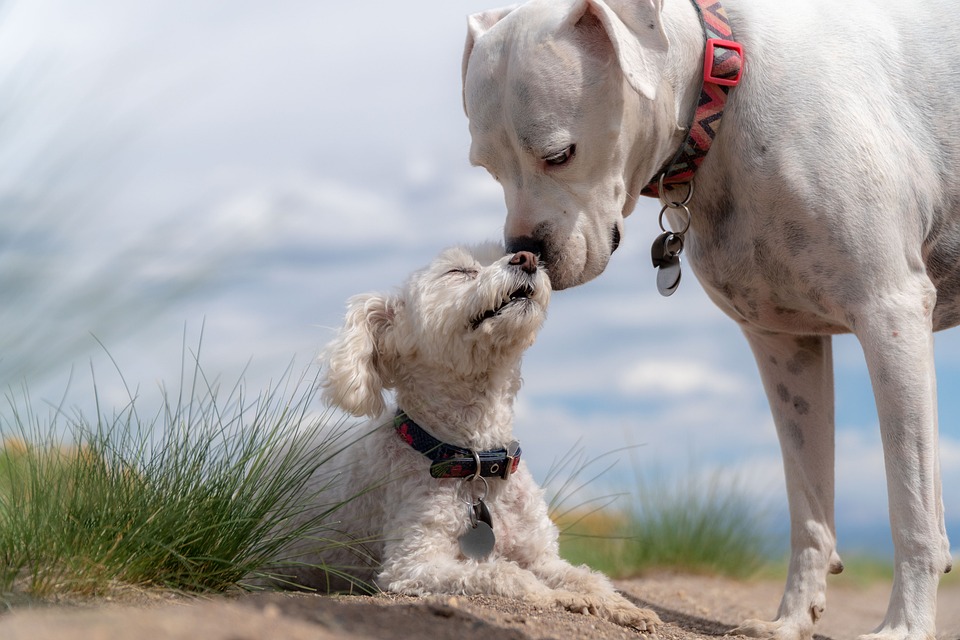**How to Address Food Aggression in Dogs: A Comprehensive Guide**
Food aggression is a common issue faced by dog owners, and it can be both frustrating and concerning. This behavior, also known as resource guarding, occurs when a dog becomes possessive and aggressive around their food or treats. Addressing food aggression is crucial not only for the well-being of your dog but also for the safety of those around them. In this article, we will delve into the causes and signs of food aggression, and provide effective strategies to address this behavior.
**Causes of Food Aggression in Dogs**
To effectively address food aggression, it is essential to understand its root causes. Several factors can contribute to a dog developing food aggression:
1. **Instinctive Behavior**: Dogs have an innate instinct to protect their resources, which includes food. In some cases, this instinct becomes heightened, leading to food aggression.
2. **Past Experiences**: Dogs that have experienced food scarcity or competition in the past may develop food aggression as a survival mechanism.
3. **Lack of Socialization**: Insufficient exposure to other dogs or humans during a dog’s critical development period can result in food aggression.
4. **Fear or Anxiety**: Dogs that feel threatened or anxious may display food aggression as a defensive response.
5. **Medical Conditions**: Certain medical issues, such as pain or discomfort while eating, can trigger food aggression in dogs.
**Recognizing the Signs of Food Aggression**
Identifying the signs of food aggression is crucial in addressing the behavior promptly. Look out for the following indicators:
1. **Growling or Snarling**: Dogs may growl or snarl when approached while eating or if someone gets too close to their food.
2. **Resource Guarding**: This behavior is characterized by a dog protecting their food by placing their body over it, showing possessiveness.
3. **Stiff Body Language**: Dogs with food aggression may exhibit tense body postures, such as stiffening their muscles or freezing when someone approaches their food.
4. **Eating Quickly**: Some dogs with food aggression consume their meals hastily as a way to prevent others from approaching.
5. **Biting or Snapping**: In severe cases, dogs may resort to biting or snapping to protect their food.
**Strategies to Address Food Aggression in Dogs**
Addressing food aggression requires patience, consistency, and positive reinforcement techniques. Here are some effective strategies to help modify this behavior in your dog:
1. **Consult a Professional**: Seeking guidance from a professional dog trainer or behaviorist can provide valuable insights and a customized plan to address your dog’s food aggression.
2. **Establish a Feeding Routine**: Set a consistent feeding schedule for your dog, ensuring they receive their meals in a calm and quiet environment.
3. **Create Positive Associations**: Gradually introduce positive experiences during mealtime by offering treats or engaging in play before and after feeding.
4. **Practice Desensitization**: Gradually desensitize your dog to the presence of people or other animals near their food by starting at a distance and gradually moving closer.
5. **Reward Good Behavior**: When your dog displays calm behavior around their food, reward them with praise, treats, or a favorite toy to reinforce positive associations.
**FAQs About Food Aggression in Dogs**
1. *Can food aggression be completely eliminated in dogs?*
– While it may not be entirely eliminated, food aggression can be significantly reduced or managed through consistent training and positive reinforcement techniques.
2. *Is punishment an effective approach to address food aggression?*
– Punishment can worsen food aggression and increase fear or anxiety in dogs. It is recommended to focus on positive reinforcement and behavior modification techniques instead.
3. *Should I attempt to take away my dog’s food while they are eating to address food aggression?*
– It is not advisable to try to take away your dog’s food while they are eating, as this can escalate aggression and lead to a dangerous situation. Seek professional guidance for a structured approach.
4. *Can food aggression in dogs be a sign of a deeper behavioral issue?*
– In some cases, food aggression may indicate an underlying behavioral issue or medical condition. Consult with a veterinarian or professional dog behaviorist to rule out any underlying causes.
By following these strategies and understanding the causes and signs of food aggression, you can effectively address this behavior in your dog, promoting a safe and harmonious environment for both your pet and your family. Remember, patience and consistency are key in modifying any aggressive behavior. Seek professional guidance if needed, and always prioritize the well-being of your furry friend.









